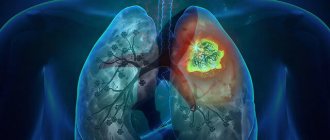Wheezing when breathing
In the absence of any health problems, breathing does not require effort and does not have additional sound: noises, wheezing or whistles. Normally, only newborn children in the first weeks of development may experience whistling when breathing due to insufficient development of the respiratory tract. Whereas in adults:
- Wheezing and dry wheezing when exhaling can be caused by a narrowing of the lumen of the bronchi: for example, with allergies, asthma, chronic bronchitis or tuberculosis.
- The cause of dry, buzzing wheezing during inspiration is often pathologies of the vocal cords, larynx, trachea, and inhalation of foreign bodies.
- Moist rales , which are easier to hear when inhaling, can appear with pneumonia and pulmonary edema.
- In asthma and COPD, wheezing and coughing are accompanied by shortness of breath and difficulty in air circulation.
Symptoms
A sign of airway obstruction is, first of all, breathing noises, most often manifested during exhalation. The patient complains of shortness of breath, his breathing becomes noisy and heavy. There are wheezing sounds resembling a whistle or a high-pitched scream. A sharp dry barking cough, characteristic of croup, is possible. Against the background of respiratory dysfunction, the patient feels weak and dizzy, the skin becomes pale. A specific syndrome is a decrease in chest volume and neck girth.
Cough and shortness of breath
Shortness of breath when inhaling is called inspiratory shortness of breath. It usually occurs with pathologies of the upper respiratory tract: asphyxia, edema, foreign body, neoplasm in the trachea, and also in some cases with heart disease.
Dyspnea during exhalation (expiratory) indicates impaired patency in the bronchial tree, bronchospasm. When coughing, difficulty in exhaling can be caused by allergies, exacerbation of bronchial asthma, bronchitis, or emphysema.
Diagnostics
The presence of whistling noises and difficulty breathing is established as a result of a physical examination. In order to establish the cause, additional research is carried out.
The presence of a foreign body is determined using fluoroscopy or bronchoscopy - examination of the respiratory tract using an endoscope. MRI and fluoroscopy can also diagnose tumors of the respiratory tract. Timely fluorography is mandatory to exclude pulmonary tuberculosis.
A clinical blood test and microbiological analysis of sputum secretion make it possible to determine the presence of inflammatory diseases of the respiratory system. An immunological blood test is also carried out, which can show changes characteristic of bronchial asthma - a decrease in the activity of T-suppressors and an increase in the level of immunoglobulins.
To assess the level of functional disorders of the respiratory system, spirometry is performed - measuring the volumetric parameters of breathing.
Cough with suffocation
An acute lack of air provokes anxiety and even fear for one’s life. Typically, bronchospasm develops suddenly; the attack may begin with a strong cough, a feeling of pressure in the chest, anxiety and itchy skin. Attacks of suffocation can be caused by asthma, COPD, pneumothorax, laryngitis and tracheitis in advanced forms, edema and tumors of the larynx, trachea and bronchi, and lung cancer.
Preventive actions
Of course, many are interested in issues of prevention. After all, it is known that it is easier to prevent a disease than to deal with its consequences later. “For various diseases, there is prevention, which means preventing repeated cases of the disease and complications, especially if the disease is chronic, for example bronchial asthma, chronic obstructive pulmonary disease. Prevention can be aimed at reducing contact with the allergen, treating concomitant diseases, chronic foci of infections such as sinusitis, inflammatory diseases of the oral cavity, caries. It is recommended to maintain a healthy lifestyle, quitting smoking and other bad habits, vaccine prevention, spa treatment and many other measures to preventing exacerbations of diseases of the bronchopulmonary system,” says Evgeniy Popov.
Question answer
Pulmonologist and phthisiatrician - what is the difference?
Causes of breathing problems
Diseases of various etiologies can cause difficulty breathing when coughing. Let's list some of them.
- Influenza and ARVI can be accompanied by difficulty breathing at the stage of coughing only in severe forms, since at this stage the development of complications begins: bronchitis, pneumonia, edema.
- In acute inflammatory diseases of the trachea and bronchi (for example, bronchitis), whistling and wheezing may appear when breathing, accompanied by coughing, fever, chills and a feeling of lack of air.
- Rhinitis makes it difficult to breathe through the nose and can cause coughing due to secretions from the nasal cavity entering the larynx.
- Allergies contribute to the activation of bronchospasm, which forms swelling of the airways. An asthma attack also causes shortness of breath, wheezing due to the resulting inflammatory process and spasm in the airways.
- Problems with the endocrine system and thyroid gland can cause compression of the larynx and cause whistling when breathing. Most often this happens with diagnosed goiter and thyrotyxicosis.
- Bronchial obstruction, characteristic of smokers and workers employed in hazardous industries, begins with coughing and shortness of breath during physical exertion and often leads to severe, incurable respiratory failure.
- Pulmonary edema is one of the diseases that threatens human life and requires immediate treatment in an ambulance or hospital. Edema is characterized by shortness of breath, lack of air and foam coming out of the mouth in the most severe cases.
If you notice a sudden deterioration in your breathing function, seek emergency medical attention immediately. Inpatient treatment in a hospital may be necessary. Sudden choking can be fatal if caused by severe allergic reactions (Quincke's edema), thromboembolism, trauma or the presence of a foreign object in the respiratory tract, or drug overdose.
Physiology of the respiratory system
“The lungs consist of a bronchial tree and alveoli, large bronchi conduct air, and as the lumen of the bronchi decreases, the air encounters more resistance and begins to squeeze through the narrow walls of small bronchi and bronchioles, this process is called diffusion. The penetration of air from the alveoli through the capillary wall into the blood also occurs as a result of diffusion,” says pulmonologist at the National Medical Research Center for Phthisiopulmonology and Infectious Diseases of the Ministry of Health of the Russian Federation Evgeniy Popov .
If this process proceeds normally, and nothing interferes with the breathing process, then extraneous noise in the lungs will not be heard and is unlikely to appear. And if an obstacle appears in the path of air, says Evgeny Popov, the force of friction begins to act. Such an obstacle may be:
- sputum;
- narrowing of the bronchi due to swelling in the presence of some kind of inflammation;
- allergic spasm;
- foreign body
- tumor.
All these phenomena lead to the formation of so-called adverse respiratory sounds or wheezing. The person himself can hear them, but he can hardly give them the correct interpretation.
Guide to lung diseases. How to distinguish the symptoms of diseases? More details
Bromhexine for easier breathing
In the presence of difficulty breathing and coughing, doctors determine that the main goal is to eliminate the cause of the pathology. With the infectious-inflammatory nature of the respiratory disease, increased discharge of sputum and mucus from the respiratory tract is required. For this, expectorants and mucolotics may be prescribed depending on the productivity of the cough, as well as antihistamines.
Bromhexine allows you to treat an unproductive or wet cough and make breathing easier by freeing the bronchi from excess phlegm. It is widely used for acute and chronic bronchitis, pneumonia, asthma, COPD, pulmonary tuberculosis. Various release forms have been developed for the drug, which ensures ease of administration and allows you to individually calculate the amount of the active component for a child or an adult.
The use of bromhexine and its analogues is recommended only as prescribed by a doctor. For asphyxia, heart disease and some other causes of breathing problems, these drugs do not help.
Treatment of wheezing in the bronchi
Thanks to the use of micro-dispersed sanitation of the bronchi, it is possible to achieve normalization of the functioning of the respiratory system as a whole, as well as to avoid relapses of bronchitis and attacks of bronchial asthma.
Treatment of wheezing with microdispersed sanitation of the bronchi allows:
- Reduce cough frequency;
- Facilitate and speed up the discharge of sputum;
- Reduce sick time;
- Reduce the risk of recurrence of wheezing in the bronchi.
These procedures stimulate the immune system and have a relaxing effect, increasing the flow of energy and blood to the lungs, increasing the immune-protective function of the body, activating metabolism and restoring the internal natural balance in the body.
Treatment of wheezing in the bronchi is closely combined with internal effects - herbal medicine - treatment with Tibetan medicines. These remedies help restore the mucous membrane, cleanse the bronchi, removing excess mucus and eliminating inflammation, as well as strengthening the human immune system for further self-defense of the body.
All procedures are strictly prescribed according to the indications of a medical specialist based on the individual characteristics of the patient’s body.
In addition, the doctor adjusts the diet according to the patient’s natural constitution, since diet and lifestyle occupy a dominant position in medicine in the treatment of most bronchopulmonary diseases. Treatment of wheezing in the bronchi is aimed not only at treating a single organ, but also at completely eliminating the causes of the disease and preventing it in the future.
When?
With a retropharyngeal abscess (this is an inflammatory process of a purulent nature that affects the soft tissues of the pharyngeal wall), with the development of diphtheria (a true narrowing of the larynx occurs due to the accumulation of mucous discharge in it), with acute laryngotracheobronchitis, then the inflammatory process of the mucous membrane of the trachea, larynx and bronchi begins . Often laryngotracheobronchitis occurs due to exposure to the influenza virus. Wheezing may occur when a foreign object enters the throat.
Warning signs
There are a number of situations with lung diseases when you cannot delay seeking help. Thus, among the dangerous symptoms appearing that require immediate medical attention are:
- sudden shortness of breath;
- a drop in oxygen levels in the blood - today you can measure it at home yourself using pulse oximeters;
- the appearance of blood in the sputum when coughing,
- a sharp deterioration in general health,
- severe weakness
- loss of consciousness and some others, as well as wheezing and whistling in the lungs, which appeared out of nowhere, also require consultation with a doctor.










